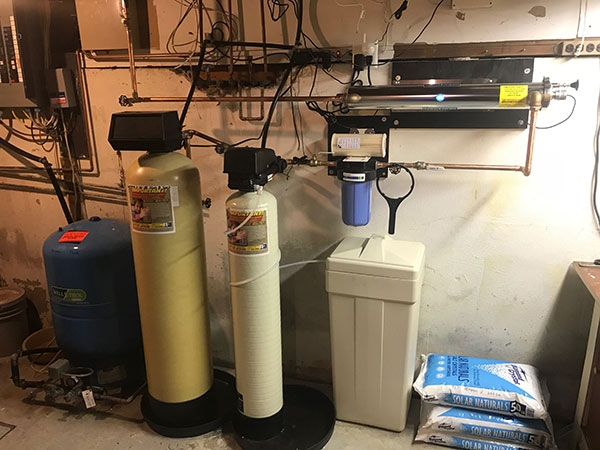Water filters are used for a wide variety of applications to clean, purify, or otherwise treat water. If you’ve got a private well, a water filtration system can be an essential piece of equipment to ensure the safety — and the general “drinkability”— of your water supply.
In this article, we’ll introduce four kinds of commonly used water filters and suggest which may be best suited for your domestic well system.
Water Filtration
First, though, what exactly do we mean by water filtration? It refers to the process by which water is forced through some kind of porous medium: that is, one that allows water (the “permeate”) through while blocking other substances or materials (the “concentrate”). The actual method of how such undesirable particles are blocked varies: from physical barriers to chemical reactions.
The porous medium used can range from sand and gravel to synthetic membranes. In this article, we’ll be focusing on four membrane-type filters.
Types of Mechanical/Membrane Water Filters
The following membrane filtration systems are distinguished by the size of their pores, as measured in microns. (One micron equals one millionth of a meter.) We’ll describe them in order of decreasing, aka finer, pore size.
Microfiltration (MF)
Microfiltration filters have pore sizes of 0.1 or larger microns. Such a filter removes most bacteria, protozoa, and suspended solids, while viruses as well as mineral salts and other dissolved substances pass through. Microfiltration systems are often used, in conjunction with or instead of pasteurization, to filter milk.
Ultrafiltration (UF)
Shifting to the ultrafiltration spectrum, we’re looking at filter pore sizes of about 0.01 to 0.1 microns. In addition to the impurities removed by MF filters, ultrafiltration filters sieve out some (but not all) viruses and chemicals. UF systems are commonly employed for wastewater treatment, milk filtration, cheese processing, and dialysis, among other uses.
Nanofiltration (NF)
Nanofiltration filters claim a pore size between 0.001 and 0.01 microns. Such finer filters remove, in addition to what’s blocked by MF and UF systems, almost all viruses, many salts, and most organic matter. Hard water is commonly passed through nanofiltration systems to soften it.
Reverse Osmosis (RO)
Reverse osmosis filters have the smallest pore size — 0.0001 microns — of these four membrane categories.
An RO system applies pressure to water to overcome the osmotic pressure that normally drives a solution across a semipermeable membrane from lower to higher concentration. In other words, RO forces water from a more concentrated or saline solution across the membrane to a less-concentrated solution, thereby removing salts and other dissolved substances as well as the contaminants blocked by the aforementioned filters.
RO filters are often used to treat drinking water, given how much they’re able to screen out. Filters with larger pore sizes, such as MF, UF, and NF systems, may be used to treat water in advance of putting it through reverse osmosis.
Testing Your Well Water
To determine what kind of filters — or what combination of filters — you may need for your well system, it’s critical to have your drinking water regularly tested. This should be done at least once a year, and potentially more frequently.
Here at Greco & Haines, we offer an array of water quality testing services to help you determine what’s in your water and what ought to be screened out.

